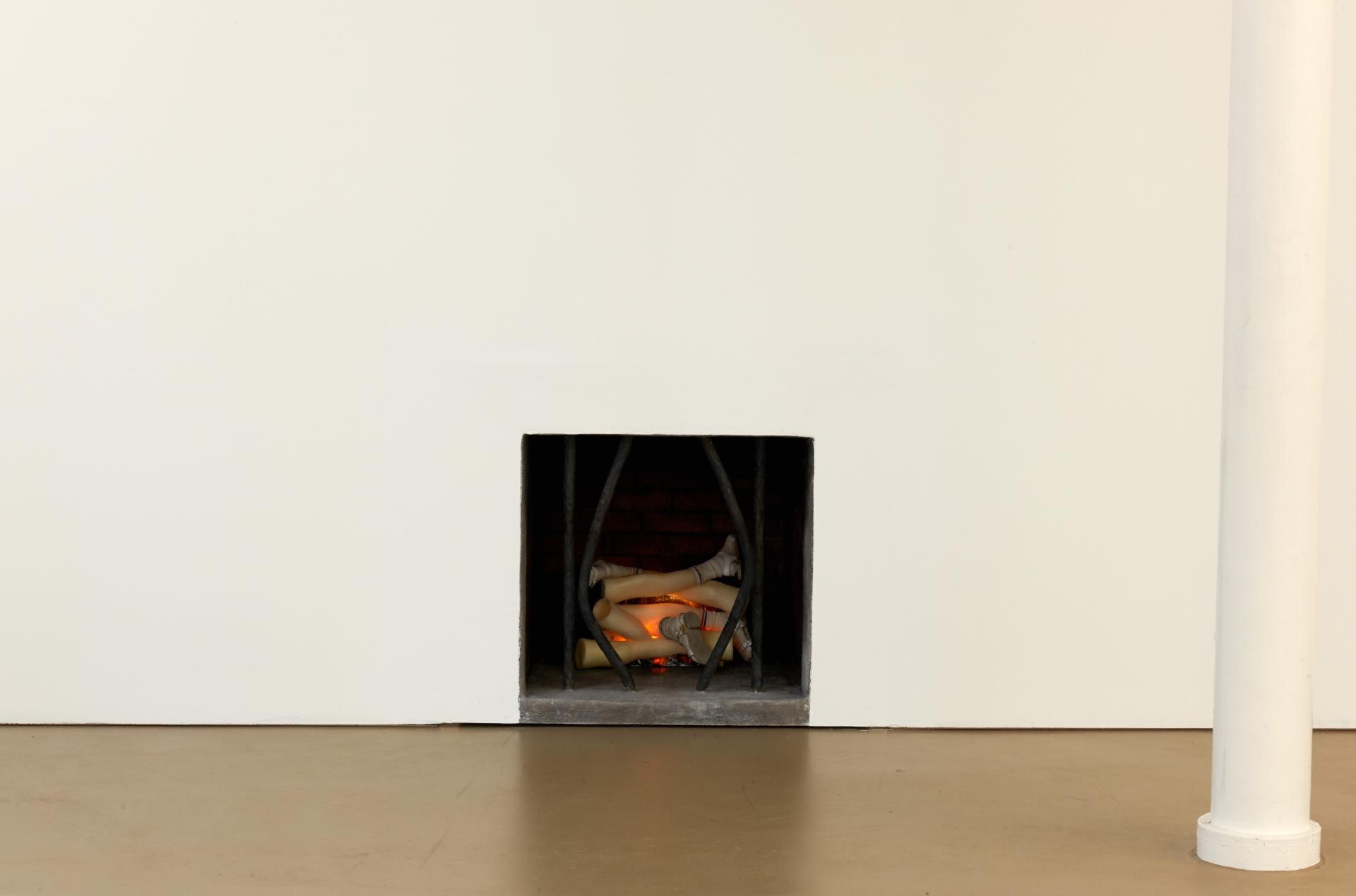Robert Gober
Collection presentation
Robert Gober (USA, b. 1954) scrutinizes the symbolic order of the postwar era from a queer perspective. His interest lies especially in the afterlife of Christian iconography. The artist’s work revolves around the collective unconscious, around what society represses—the uncanny. The works are typically inspired by objects from everyday life that bear some relation to the artist’s own life. He examines the interdependencies between domestic and infrastructural spaces and the power structures that define them. The current collection presentation at the Kunstmuseum shows, for example, Gober's work Chair with Pipe, which was created for his solo exhibition in 1995 at the Kunstmuseum Basel | Gegenwart. The chair gored by a culvert pipe is upholstered with a fabric printed with a photomontage. The latter shows silk ribbons weaving under and over the artist’s own hairy limbs.
In the course of his career as an artist, Gober has occasionally presented his works in museum collections, arranging them in associative constellations with artifacts and everyday implements from widely diverse historic and geographic contexts. Our presentation pays homage to this approach, initiating a dialogue between Gober’s art and works from different periods that evince thematic parallels with his practice. One focus is on works that reflect on the Catholic imaginary: early modern depictions of martyrs’ ordeals and the body of Christ meet painting by Maria Lassnig and a sculpture by Richard Artschwager in the shape of a confessional.


